Key takeaways:
- Effective presentations balance technical clarity with storytelling to engage and resonate with audiences.
- Building personal connections and incorporating interactive elements can significantly enhance audience engagement.
- Practicing delivery through self-review and feedback fosters confidence and improves connection with the audience.
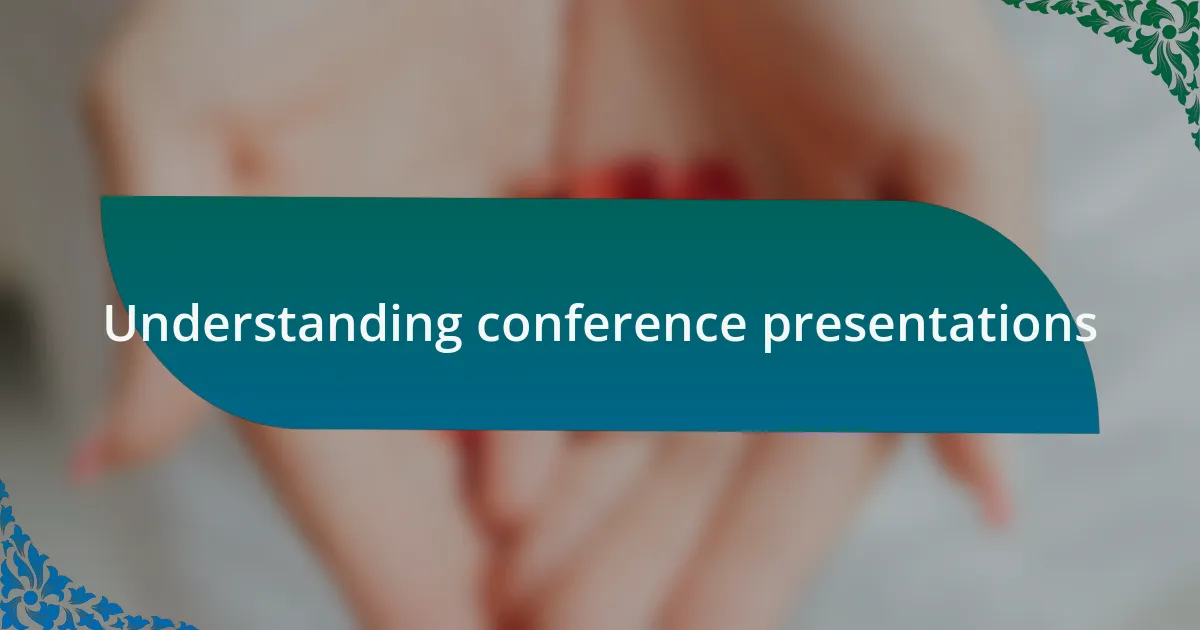
Understanding conference presentations
Understanding conference presentations involves grasping their unique role in the scientific community. I remember attending my first conference, feeling both excited and anxious. It struck me how these presentations are not just about sharing data; they’re opportunities to forge connections and spark conversations that can lead to collaboration.
Have you ever felt overwhelmed by the sheer number of statistics and jargon a presenter can throw at an audience? I know I have. This experience taught me that effective presentations need clarity and engagement. It’s essential to balance technical details with compelling stories that resonate with the audience’s experiences and interests.
Additionally, the emotional aspect of presenting can’t be overlooked. When I first stepped onto a stage, my heart raced, but I realized that vulnerability often makes a presentation more authentic. Audiences appreciate when a speaker shares their own journey or challenges, as it creates a relatable environment and fosters deeper connections.
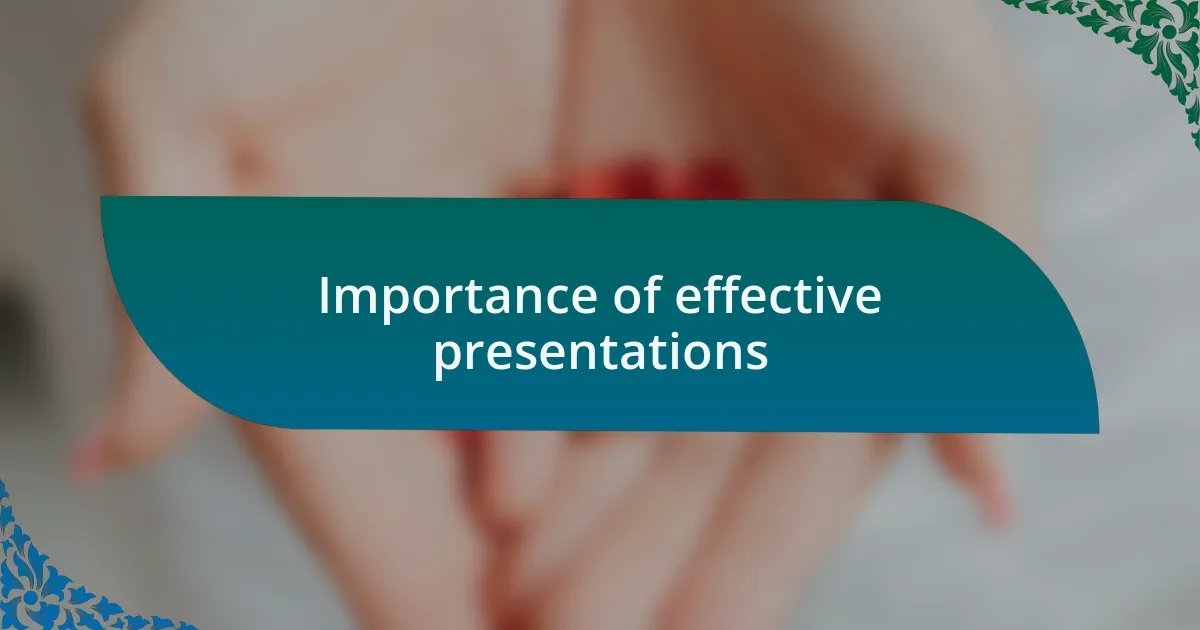
Importance of effective presentations
Effective presentations are crucial in conveying complex information clearly and persuasively. I recall a time when I witnessed a colleague struggle with their data during a session. The audience seemed lost, and it was evident that without clear communication, even groundbreaking research can fail to make an impact. This experience underscores how essential it is for presenters to not only share their findings but to do so in a way that resonates with their listeners.
Moreover, engaging presentations can ignite enthusiasm and foster collaborative discussions. I once attended a session where the presenter expertly wove in storytelling, transforming data into a compelling narrative. I found myself inspired to approach my own work in a similar manner. Have you ever left a presentation feeling motivated to take action? That’s the power of effective communication—it can drive innovation and spark new ideas that change the course of research.
Lastly, the ability to connect with an audience can create lasting impressions. I remember being deeply influenced by a speaker who shared not only their research but also the personal challenges they faced in their journey. That vulnerability made their work relatable and memorable. It’s moments like these that highlight why mastering the art of presentation is not just valuable skill but an essential part of our scientific ecosystem.
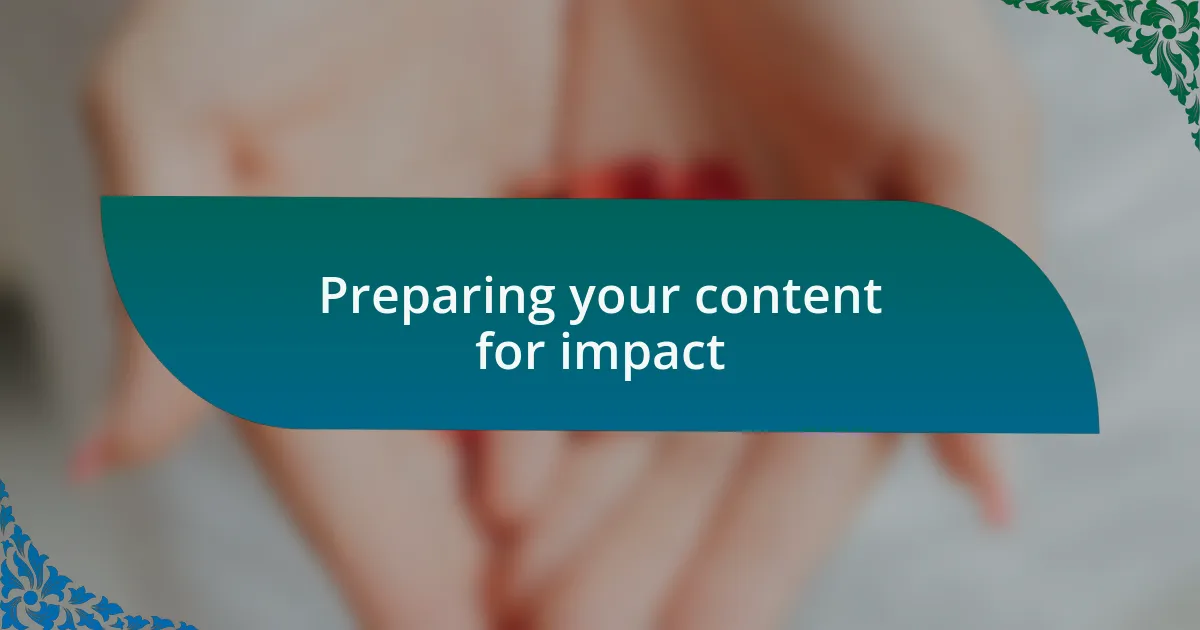
Preparing your content for impact
When I prepare my content, I often start by identifying the core message I want to convey. For instance, during a recent presentation on a novel drug delivery system, I focused on the transformative potential of our research rather than getting bogged down in technical jargon. This decision helped clarify my thoughts and allowed my audience to connect with the impact of my findings right from the outset.
Using visuals effectively can also bolster your message significantly. I learned this the hard way during a past conference when my PowerPoint slides became overly cluttered with text. It wasn’t until I stripped them down to key visuals and bullet points that I saw an increase in audience engagement. Have you ever noticed how a single impactful image can stick in your memory long after a presentation? That’s the kind of connection we should aim to create.
Another vital element is anticipating audience questions. I remember once being caught off-guard when an attendee asked about the practical applications of my work. Since then, I’ve made it a point to not only prepare for standard queries but also to envision the implications of my research. By doing so, I empower myself to lead more dynamic discussions, keeping the audience intrigued and involved.
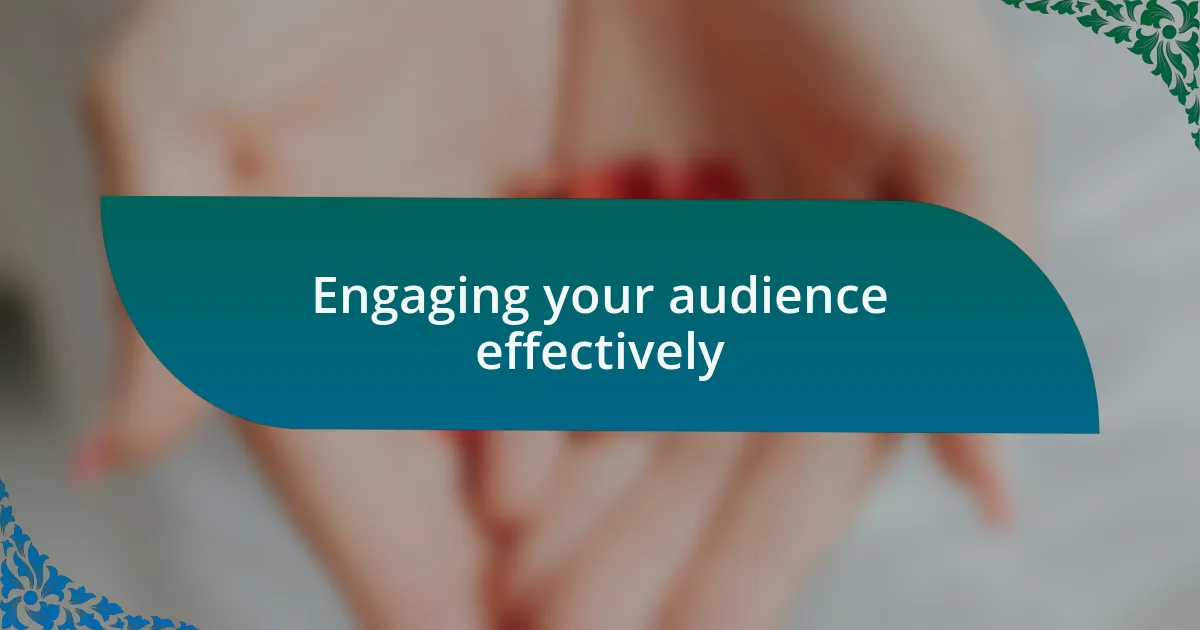
Engaging your audience effectively
One effective way to engage your audience is to establish a personal connection right from the start. I remember a time when I shared a brief story about my initial struggles with a complex research project. This vulnerability not only humanized my presentation but also made my audience feel more connected to my journey. How often do we overlook the power of storytelling in science? It can bridge the gap between technical content and relatable experiences, drawing listeners in.
Interactive components can also be a game changer. During a recent presentation, I incorporated a live poll to gauge opinions on a specific drug delivery method. The immediate feedback not only sparked lively discussion but also made the audience feel like active participants rather than passive listeners. Have you considered how involving your audience in real-time elevates their investment in the topic you’re discussing?
Lastly, body language plays a crucial role in engagement. I learned this when I noticed my audience’s energy dipping as I stood rigidly behind a podium. Once I began moving around the stage, maintaining eye contact, and using open gestures, I saw an immediate shift in their responsiveness. Isn’t it fascinating how our physical presence can influence an audience’s energy? Being aware of this can help us create a more inviting atmosphere, making our messages resonate deeper.
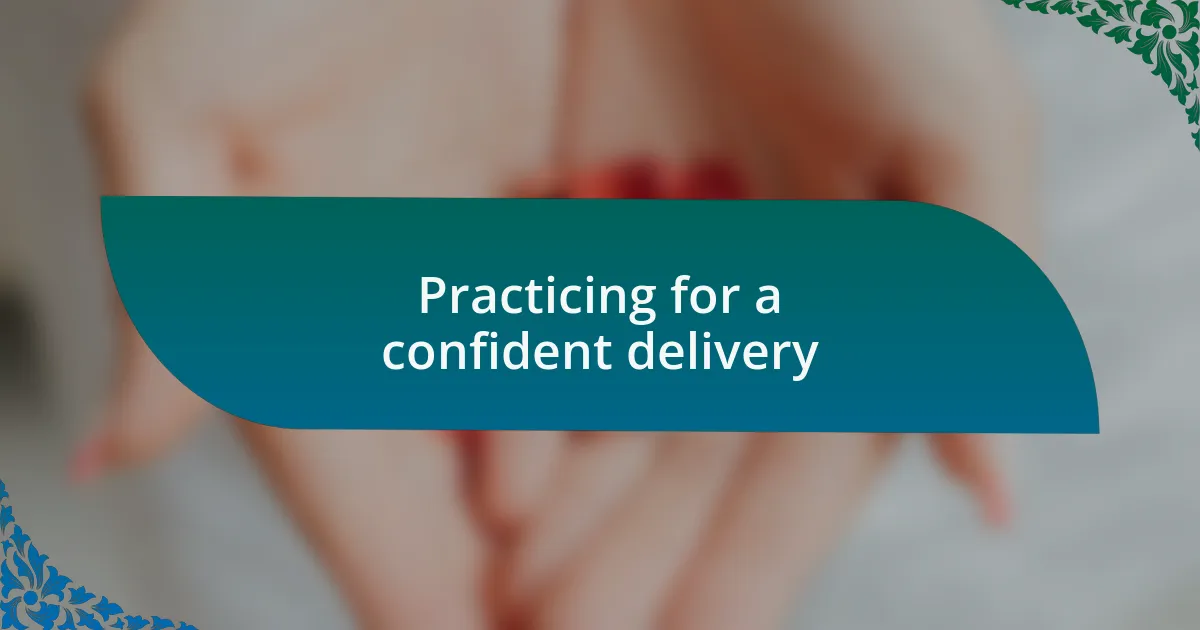
Practicing for a confident delivery
Practicing your delivery is essential to presenting with confidence. I recall a time when I recorded myself rehearsing a presentation on drug delivery technologies. Watching the playback was eye-opening; I noticed my pacing was off, and I tended to mumble certain phrases. This experience made me realize that self-review can unveil aspects of our delivery that we might otherwise miss. Have you ever tried this method? It can be incredibly revealing.
Repetition is another key to gaining confidence in your delivery. I make it a habit to practice in front of friends or colleagues who can provide constructive feedback. On one occasion, a colleague pointed out that I was overly reliant on my notes, which diminished my connection with the audience. Their honest input helped me refine my approach, allowing me to engage more naturally. How valuable is it to receive feedback that challenges us to improve?
Lastly, I find that simulating the actual presentation environment can significantly enhance comfort levels. Before a major conference, I reserved a small conference room to recreate the setting. Standing in front of an empty audience, I felt the jitteriness begin to fade as I spoke aloud. I realized that visualizing the space where I would present made it feel less intimidating. What strategies do you use to prepare? Embracing simulation not only familiarizes you with the physical space but also solidifies your preparedness.